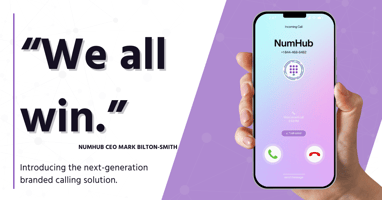In today's rapidly evolving digital landscape, the integration of Bring Your Own Carrier (BYOC)...
Why Can't My Carrier Tell Me Who is Spoofing My Business's Toll-Free Number?
Caller ID spoofing, including spoofing of toll-free numbers, is a significant problem in telecommunications. However, your carrier faces several challenges that make it difficult to identify and inform you about the entity spoofing your number. These challenges are technical, regulatory, and jurisdictional in nature.
Technical Challenges
Caller ID Transmission Protocols
Caller ID information is transmitted using signaling protocols like SS7 (Signaling System No. 7), which were designed without robust authentication mechanisms. This allows malicious actors to easily alter the caller ID information. The spoofed caller ID can be inserted at any point in the call routing process, often involving multiple carriers and networks, which complicates tracing the call back to its origin.
VoIP Technology
Voice over Internet Protocol (VoIP) services allow users to configure the caller ID information that appears on the recipient's phone. Fraudsters exploit this flexibility to enter any number they choose. VoIP calls can be routed through various networks and countries, making it difficult to trace the origin of the call.
Complex Call Routing
Modern telecommunications infrastructure involves interconnected networks of multiple carriers and service providers. A call may pass through several networks before reaching its destination, and each network may handle caller ID information differently. This complexity means that even if one carrier detects spoofing, they may not have the visibility or capability to trace the call back through all intermediary networks.
Regulatory and Privacy Issues
Data Privacy Regulations
Carriers are bound by strict data privacy regulations that limit their ability to share customer information. Identifying and sharing information about spoofed calls may conflict with these regulations. Laws such as the General Data Protection Regulation (GDPR) in the EU and the California Consumer Privacy Act (CCPA) in the US impose stringent requirements on how personal data can be handled and shared.
Jurisdictional Limitations
Spoofed calls often originate from different countries with varying legal frameworks and levels of cooperation. This makes it challenging for carriers to coordinate efforts to trace and attribute spoofed calls internationally. International cooperation is necessary but often slow and complicated by differing legal standards and enforcement capabilities.
Efforts to Combat Spoofing
STIR/SHAKEN Framework
The STIR/SHAKEN (Secure Telephone Identity Revisited/Signature-based Handling of Asserted Information Using toKENs) framework is an industry-standard aimed at authenticating caller ID information. This technology helps verify that the caller ID information has not been tampered with, making it more difficult for fraudsters to spoof numbers. Carriers in the United States are required to implement STIR/SHAKEN under the TRACED Act to help combat robocalls and caller ID spoofing.
Robocall Mitigation
Carriers are implementing robocall mitigation techniques, including call blocking and labeling services, to reduce the impact of spoofed calls. These services can identify and block suspicious calls based on patterns and known fraudulent numbers.
Consumer Education
Educating consumers and businesses about the risks of spoofing and encouraging vigilance can help mitigate the impact. Recipients of suspicious calls are advised not to trust caller ID information blindly and to verify calls independently.
While carriers face significant technical, regulatory, and jurisdictional challenges in identifying and informing customers about who is spoofing their toll-free numbers, ongoing efforts in technology and regulation are gradually improving the ability to detect and prevent spoofing. Consumers and businesses should remain vigilant and use available tools and services to protect themselves from spoofing and other fraudulent activities.



.png?height=200&name=source_of_truth%20(1).png)